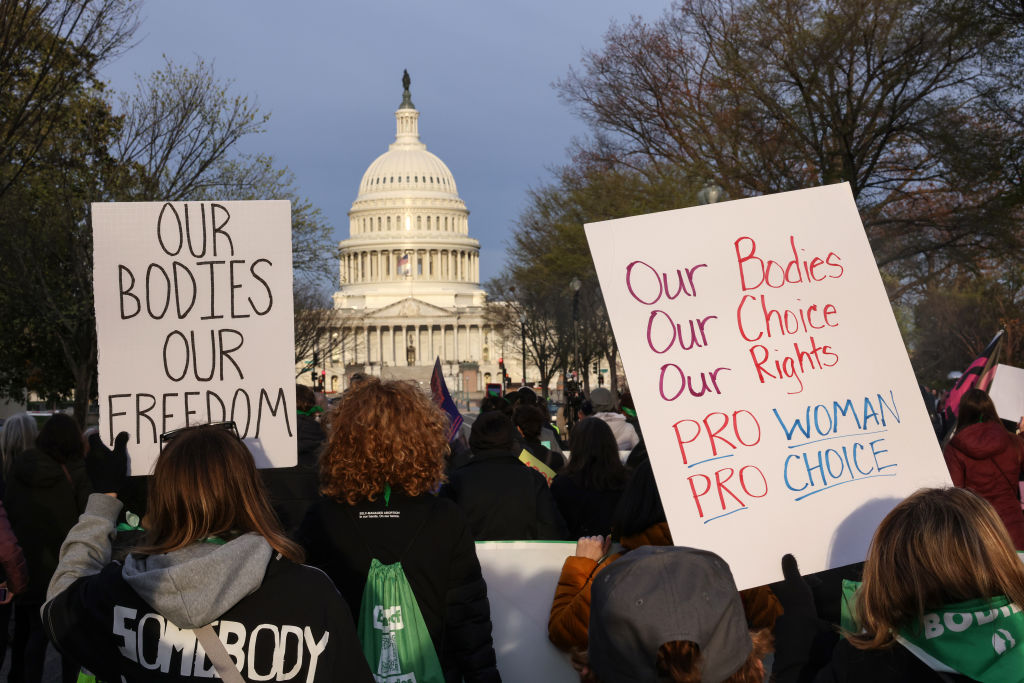
The Supreme Court heard oral arguments Tuesday in FDA v. Alliance for Hippocratic Medicine. The case concerns the drug mifepristone, one of the two medications used to complete a self-induced abortion.
In 2000, the drug was initially approved by the FDA with overwhelming evidence that it was safe. The approval, however, was made contingent on regulations that currently operate under the banner of Risk Evaluation and Mitigation Strategy, or REMS. The REMS allowed for additional restrictions, including mandating that the drug be accessed in person at a clinic. The FDA eventually altered the regulations to make it more accessible—first, in 2016, then again in 2021 during the pandemic: The FDA stopped requiring patients to access the drug in person, which was both in line with evidence and necessary in the context of the pandemic.
In Tuesday’s case, the Alliance for Hippocratic Medicine and physician plaintiffs challenged the 2016 and 2021 changes. The plaintiffs would like the FDA regulations to shift back to what they were in 2000—which would make the contemporary regulation of mifepristone out of sync with evidence.
The case is taking place against a bigger backdrop: The Supreme Court is critical of the administrative state, and this case could offer an opportunity to take a big blow at one agency, the FDA, essentially making the FDA regulation of drugs subject to court decisions and individual’s personal objections to providing a medication. Alongside the broader considerations of the administrative agency, the conservative members of the court, who decided Dobbs, are not sympathetic to the plight of people who need abortions.
Key Issues in Oral Arguments
Tuesday’s oral arguments suggested that despite these countervailing forces, the Court would not be using this case to strike a blow at the FDA’s drug regulating authority.
Several key issues were present in the oral arguments.
1. Separation of Powers
A primary issue was about separation of powers: Should the Court be overturning expert agency decisions?
Justice John Roberts seemed skeptical that we should exist in a state of affairs that does not allow for judicial review of the FDA.
Justice Ketanji Brown Jackson sought to understand what scope the Court should have in overturning agency decisions.
Erin Hawley, lawyer for the Alliance for Hippocratic Medicine, argued that they were not asking the court to review agency determinations but rather “look at what the FDA said.” Hawley suggested that the FDA failed to have the evidence necessary to make the changes that they made in the regulation of mifepristone.
Solicitor General Elizabeth Prelogar offered a highly deferential view—that the Court is not equipped with the evidence or expertise to overturn regulations put into place by the FDA.
2. Legal Standing
A second major issue was standing—or whether the plaintiffs even have the right to bring the case.
The plaintiffs are physicians and the Alliance for Hippocratic medicine. In brief, the plaintiffs need to show that they have a “genuine stake” in the case outcome. The Fifth Circuit found that the plaintiffs have standing. However, these plaintiffs—physicians who claim that they might have to treat women for self-induced abortion, but never have experienced any of the harms they assert they may be faced with—are asserting a link that is even too attenuated for the Supreme Court justices to find standing. This skepticism of the plaintiffs’ claims to standing seemed to be shared across the Supreme Court’s political divide.
Finally, the oral arguments clarified that there is a robust set of conscious exemptions that allows physicians to opt out of medical procedures and refuse to offer care where they have an objection to doing so. Both Justice Jackson and Kagan pressed the idea that a conscious objection might cover the physicians who felt that they did not want to provide abortions or address the consequences of medication abortion.
It is worth noting that lost in the discussions about mifepristone are the lived experiences of people who use mifepristone to have abortions.
After Dobbs, it is difficult to imagine the majority will let reason prevail—but the oral arguments suggest that the justices might decline to overturn the FDA’s expert judgement (as Roberts did in 2021) or find that the plaintiffs do not have standing to bring the case.
Up next:
U.S. democracy is at a dangerous inflection point—from the demise of abortion rights, to a lack of pay equity and parental leave, to skyrocketing maternal mortality, and attacks on trans health. Left unchecked, these crises will lead to wider gaps in political participation and representation. For 50 years, Ms. has been forging feminist journalism—reporting, rebelling and truth-telling from the front-lines, championing the Equal Rights Amendment, and centering the stories of those most impacted. With all that’s at stake for equality, we are redoubling our commitment for the next 50 years. In turn, we need your help, Support Ms. today with a donation—any amount that is meaningful to you. For as little as $5 each month, you’ll receive the print magazine along with our e-newsletters, action alerts, and invitations to Ms. Studios events and podcasts. We are grateful for your loyalty and ferocity.





